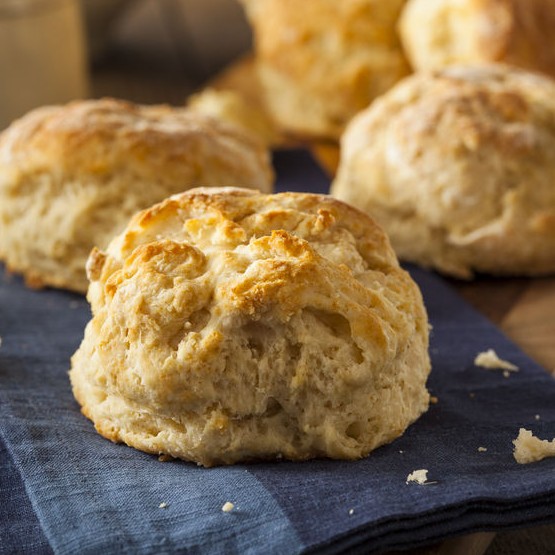
Biscuit Shortening Flakes
What are Biscuit Shortening Flakes?
Biscuit shortening flakes are a solid flake-type of shortening intended to impart increased flakiness to biscuits. They are a specialty shortening for biscuits but may also be used for dinner rolls or pizza crusts. they are particularly conducive to dry mix applications.
Origin
The invention of shortening was driven by the replacement of the high price of butter. The Procter and Gamble Company introduced its hydrogenated shortening, “Crisco,” on the market in 1911.1 Since then, hydrogenation has been employed by every producer of shortening.
Hydrogenation is the process of adding extra hydrogen atoms to the vegetable fats, consequently turning them into solids from its liquid state.2 The hydrogenation process could create trans-fatty acids. Enzymatic or chemical interesterification has been used to produce trans fat free shortening. The resulting trans-free shortening has been used as an alternative to hydrogenated shortening in preparing short dough biscuits.3 Considering the function of shortening, all purpose shortening was first developed, then flaked shortenings started evolving as specialty products for specific bakery products.
Function
American biscuits are described as “quick breads” made with baking powder, instead of yeast or baking soda, in combination with buttermilk as the acid ingredient for leavening.4 When applying biscuit flake shortening, mix directly with the flour, to gently wet the flour without causing excessive gluten development.
As the common function of shortening, biscuit shortening flakes lubricate the structure of the biscuit. The fat breaks the continuity of the protein and starch structure. This enables the lubrication of gluten particles and limits gluten development, which produces a tender and well-aerated bakery product.
To determine the function of shortenings, three factors need to be considered:
- the ratio of the solid phase to the liquid phase of the shortening or solid fat index
- the plasticity of the shortening
- the oxidative stability of the shortening1
The term “plastic” implies a solid, non-fluid, non-pourable, and non-pumpable shortening at room temperature.1 Shortenings with good plasticity have better consistency for a wider temperature range. Oxidative stability concerns the formation of trans fatty acids during the baking.
Plasticity is not a desired attribute for biscuit shortenings.4 They could be of a consistency only soft enough to handle conveniently. So biscuit shortenings have a narrow plastic range. This is different with other shortenings, like bread shortenings, which have a wide plastic range at room temperature.1 Considering the oxidative stability, good stability is preferred.
Reference
- Ghotra, Baljit S., Sandra D. Dyal, and Suresh S. Narine. “Lipid Shortenings: A Review.” Food Research International 35.10 (2002): 1015-048.
- “Shortening | Baking Ingredients.” Bakerpedia. www.bakerpedia.com/ingredients/shortening/ Accessed 11 Jan. 2017.
- Handa, Chanu, Sangeeta Goomer, and Anupa Siddhu. “Performance and Fatty Acid Profiling of Interesterified Trans Free Bakery Shortening in Short Dough Biscuits.” International Journal of Food Science & Technology 45.5 (2010): 1002-008. doi: 10.1111/j.1365-2621.2010.02222.x
- O’Brien, Richard D. “Chapter 6. Baking Shortenings.” Fats and Oils: Formulating and Processing for Applications. 3rd ed. Boca Raton, FL: CRC, 2009. 387-88.

